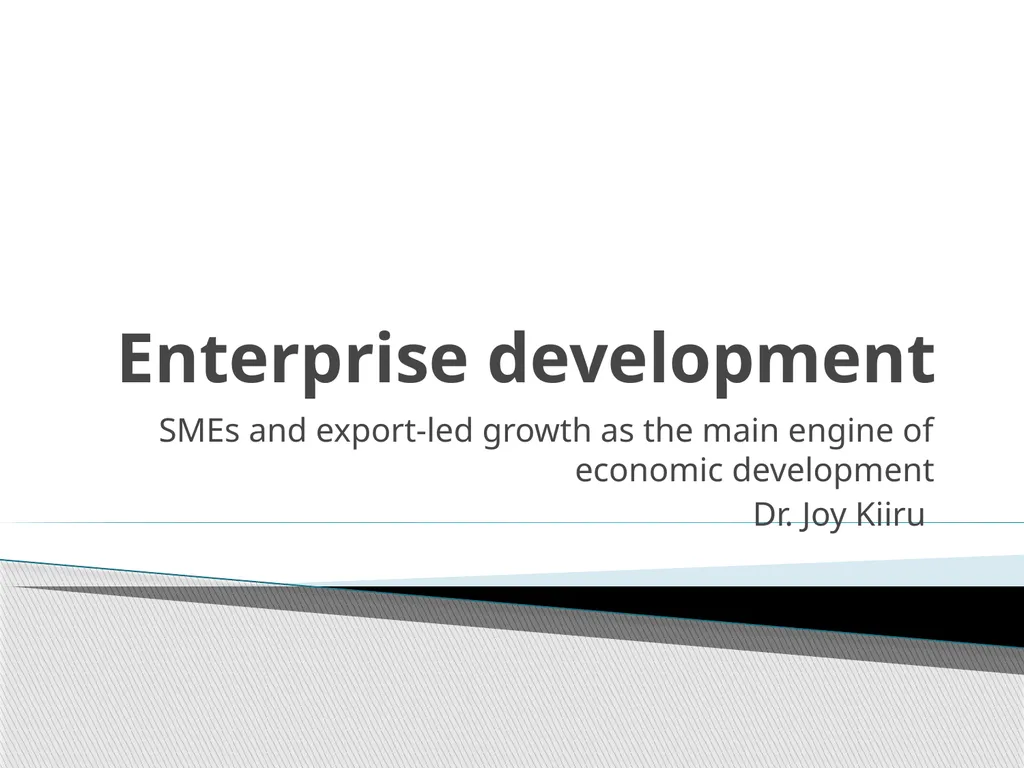
Enterprise development SMEs and export-led growth
Author: tatiana-dople | Published: 2025-05-23
Description: Enterprise development SMEs and export-led growth as the main engine of economic development Dr. Joy Kiiru Enterprise development is about growing existing companies rather than developing start-ups It is enterprise development that
Download Presentation
Download the PPT/PDF: Download
Transcript:
Loading transcript…